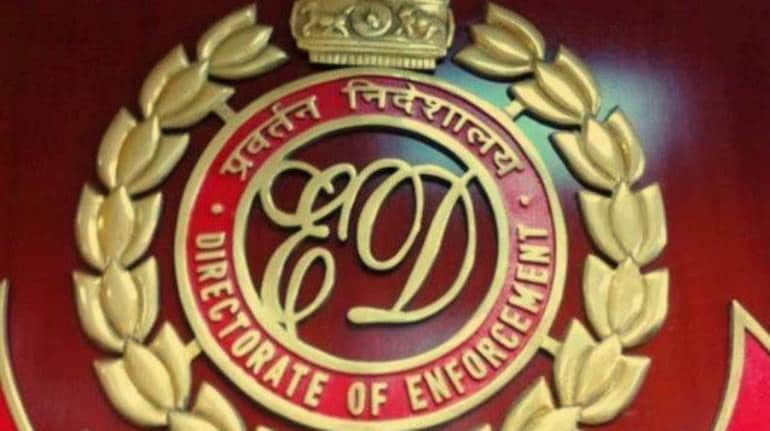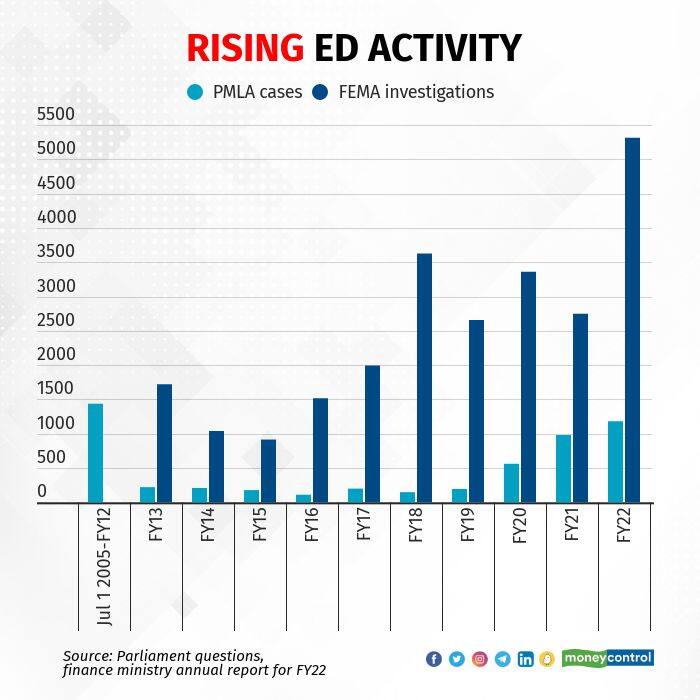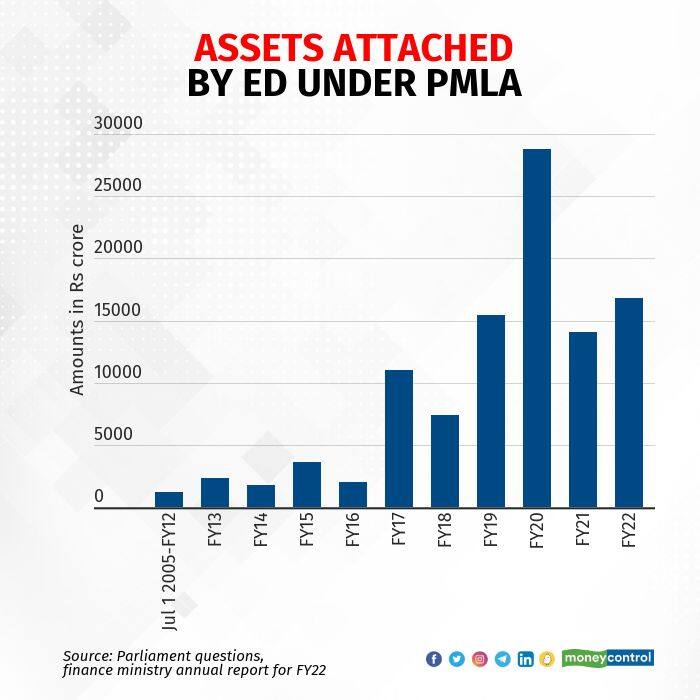



On August 1, Shiv Sena leader and Member of Parliament Sanjay Raut became the latest high-profile arrest made by the Directorate of Enforcement (ED). Raut's arrest under a legislation to tackle the menace of money laundering came amid increasing criticism of the agency, with politicians from Opposition parties accusing it of taking orders from the Bharatiya Janata Party-led government at the Centre and targeting its political rivals.
The Centre has distanced itself from the activities of the ED, but it is safe to say the agency has been sniffing around with increased vigour in recent years.
The finance ministry has admitted as much.
In its annual report for 2021-22, the ministry said the ED's work had increased "considerably both qualitatively and quantitatively" in the recent past.
"Investigations have commenced in several high-profile cases with positive results in terms of attachment and confiscation of proceeds of crime related to bank fraud, corruption, drugs and human trafficking and terror financing etc," the finance ministry said.
Set up in 1956, the ED is the Centre's "premier law enforcement agency" and administers and enforces the Prevention of Money Laundering Act (PMLA), 2002, the Foreign Exchange Management Act (FEMA), 1999, and the Fugitive Economic Offenders Act (FEOA), 2018.
The ED is in many ways the financial sheriff in town. Some would say it is the premier sheriff in town, displacing its peer, the Central Bureau of Investigation (CBI), in pursuing high-profile cases. Here is a look at its rising activity in recent years.

In the last three financial years, the ED has filed 2,723 Enforcement Case Information Reports under PMLA. In contrast, it recorded 2,699 cases in the previous 14 or so years, according to data compiled by Moneycontrol.
Over the same three-year period, the ED initiated 11,420 investigations under FEMA – 710 more than what was initiated in the preceding five years.
How has the probe agency ramped up its activity so rapidly? According to an August 2 report by news agency ANI, the rise in the ED's activity in recent years has coincided with an increase in its manpower.
"The Enforcement Directorate …has witnessed a remarkable growth over the last nearly four years since Sanjay Kumar Mishra assumed office as its Director," ANI reported.
"When Sanjay Mishra took charge as ED Director in 2018, the agency had five Special Directors and 18 Joint Directors," it added.
The website of the ED shows that in addition to the director, it currently has six special directors, 13 additional directors, 19 joint directors, and 18 deputy directors.
In its August 2 report, ANI said, quoting sources, that the ED currently has nine special directors, three additional directors, 36 joint directors, and 18 deputy directors.
Sums involved?
In response to a question in Parliament last month, Minister of State for Finance Pankaj Chaudhary said assets worth Rs 5,346 crore had been attached by the ED under PMLA between 2004-05 and 2013-14. From 2014-15 to 2021-22, assets worth Rs 99,356 crore were attached.

The numbers for FEMA are smaller, but not insignificant.
Between 2004-05 and 2013-14, the ED imposed a penalty of Rs 1,754 crore with assets worth a mere Rs 14 crore being seized under FEMA. However, the figures jump for the next few years covering BJP's rule at the Centre. From 2014-15 to 2021-22, penalties totalling Rs 6,377 were levied and assets worth Rs 7,066 crore were seized.
Who has borne the bulk of the ED's ire? The finance ministry's annual report for FY22 lays bare those details.

As of November 30, 2021, the ED had seized, frozen, or attached assets worth Rs 96,869 crore as part of the numerous money laundering cases it was investigating.
The bulk of these, at over 40 percent, related to bank frauds. Other major offences included Ponzi schemes and other cheating-related frauds, at 17 percent and 18 percent, respectively. Offences related to corruption in government agencies and public sector businesses accounted for 14 percent of the assets seized, frozen, or attached.
But more than just the increased activity of the ED, it is the manner in which it is backed by law that has left people concerned.
Last week, the Supreme Court upheld certain provisions under PMLA in its judgment on a batch of more than 240 petitions challenging their constitutional validity. These provisions pertained to the ED's powers to search, seize, arrest, investigate, and attach properties, among others.
Consider the previously mentioned Enforcement Case Information Reports, or ECIR, which the apex court said on July 27 was not the same as a First Information Report (FIR).
While anyone accused of a crime is entitled to get a copy of the FIR, the same does not apply for the ECIR under the PMLA, which is treated as an internal document of the ED.
Discover the latest Business News, Sensex, and Nifty updates. Obtain Personal Finance insights, tax queries, and expert opinions on Moneycontrol or download the Moneycontrol App to stay updated!